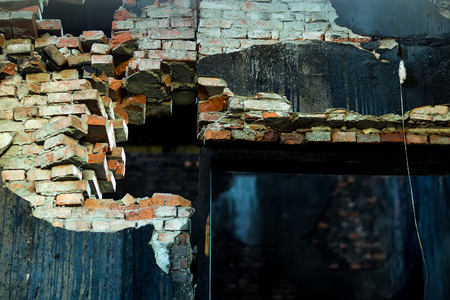Introduction: The Timeless Appeal of Exposed Brick Walls
Exposed brickwork has become a defining feature within British interiors, seamlessly bridging the past with the present. Its distinctive texture and warm, earthy hues evoke a sense of heritage that resonates deeply across the UK’s diverse homes and public spaces. Rooted in centuries-old architecture, brickwork was once a practical solution—robust, fire-resistant, and locally sourced. Today, it continues to captivate designers and homeowners alike for its ability to infuse character and authenticity into any setting. From Victorian terraces in London to converted industrial warehouses in Manchester, exposed bricks serve as a visual reminder of Britain’s architectural evolution. This enduring popularity speaks to more than just aesthetics; it reflects a national appreciation for craftsmanship, history, and the unique charm that only genuine materials can provide. Whether chosen for their raw industrial edge or their rustic countryside warmth, exposed brick walls remain an iconic element in British design, celebrated for their versatility and timeless appeal.
Industrial Heritage: Brickwork in Urban British Spaces
Exposed brickwork is deeply rooted in the industrial heritage of the United Kingdom, particularly within its urban landscapes. From the stately Victorian terraces lining London’s streets to the converted warehouses along Manchester’s canals, bricks have long been an integral element in shaping British cityscapes. These materials, once chosen for their practicality and durability during the Industrial Revolution, now serve as a bridge between past and present in contemporary interior design.
The robust appeal of exposed brick originated from necessity: bricks were readily available, fire-resistant, and capable of supporting large structures. As industry flourished, so too did the construction of factories, mills, and worker housing—each defined by sturdy brick walls. Today, these same features add character and a sense of authenticity to modern interiors, whether in converted lofts or carefully preserved period homes.
| Building Type | Era | Typical Brick Features |
|---|---|---|
| Victorian Terraces | Mid-19th Century | Red/orange brick, ornate patterns, sash windows |
| Industrial Warehouses | Late 18th – Early 20th Century | Exposed load-bearing brick, arched lintels, tall ceilings |
| Railway Arches | Victorian Era | Robust curved brickwork, visible mortar joints |
This enduring legacy is not merely aesthetic; it represents a narrative of transformation—industrial spaces reimagined as stylish urban dwellings. The tactile surfaces and earthy tones of exposed brick reflect the spirit of innovation and resilience that define British cities. By retaining original brickwork or thoughtfully exposing it during renovations, designers pay homage to this history while infusing interiors with warmth and texture unique to UK urban environments.
![]()
Rustic Revival: Embracing Warmth and Texture
Exposed brick walls hold a special place in the hearts of those who adore Britain’s rustic aesthetic. Whether nestled within a countryside cottage in the Cotswolds or accenting a contemporary London flat, bare brickwork instantly evokes a sense of warmth and authenticity. This rustic revival is steeped in the British tradition of valuing craftsmanship and natural materials—a legacy that endures from hand-laid Victorian walls to today’s skillfully restored interiors.
In rural homes, exposed brick creates a timeless backdrop for classic British décor: think weathered timber beams, vintage furnishings, and woollen textiles. The uneven surfaces and earthy tones offer tactile appeal, inviting you to appreciate the rich history embedded in each brick. Meanwhile, in urban settings, the same material introduces an organic counterpoint to sleek finishes, softening modern spaces with its textured charm.
More than just an aesthetic choice, exposed brick connects past and present through its honest expression of materiality. It celebrates British ingenuity—where the artistry of skilled masons meets the raw beauty of clay and mortar. This blending of craft and nature ensures that exposed brick remains at home across diverse environments, from city lofts to country retreats.
4. Blending Styles: Modern British Takes on Brick Walls
Contemporary British designers have mastered the art of blending exposed brick with an array of décor styles, creating interiors that are both visually captivating and unmistakably modern. The raw, tactile surface of brick provides a striking backdrop for minimalist furnishings, eclectic accessories, or nods to classic period charm. This seamless fusion not only honours the building’s heritage but also injects a fresh, sophisticated edge into living spaces.
Minimalist Pairings
One popular approach is to pair exposed brick walls with minimalist décor. Clean lines, neutral palettes, and uncluttered layouts allow the unique texture and warmth of the brickwork to take centre stage. By using simple furniture pieces in muted colours—think dove grey sofas or matte black metal lighting—designers create an elegant contrast that feels both contemporary and timeless.
Eclectic Contrasts
For those who crave personality and vibrancy, eclectic styling offers endless possibilities. Contemporary British interiors often juxtapose exposed brick with bold patterns, vintage finds, or global accents. Layering colourful textiles, abstract artwork, or mid-century modern furnishings against brick walls results in dynamic spaces brimming with character. This curated mix encourages self-expression while still respecting the building’s original fabric.
Period-Inspired Accents
The versatility of exposed brick also shines when paired with period-inspired décor. Designers frequently blend Victorian or Georgian details—such as ornate cornices, cast iron fireplaces, or antique mirrors—with rustic brickwork to evoke a sense of history and grandeur. This marriage of old and new celebrates Britain’s rich architectural legacy while ensuring interiors remain inviting and relevant.
British Design Fusion: Key Approaches
| Style Approach | Main Features | Visual Impact |
|---|---|---|
| Minimalist | Sleek furniture, neutral tones, open space | Emphasises texture; calm & airy feel |
| Eclectic | Mix of eras & patterns, vibrant accessories | Lively contrast; layered personality |
| Period-Inspired | Antique details, traditional craftsmanship | Nostalgic elegance; historical depth |
A Modern British Statement
Through these innovative blends, exposed brick walls have become more than just remnants of industrial pasts—they are celebrated design features that anchor rooms with character and adaptability. Whether subtly chic or boldly expressive, the British approach to styling exposed brick continues to set trends in spatial transformation across homes and commercial venues alike.
5. Practical Considerations and Authentic Character
Maintaining Exposed Brick: Preserving Patina and Integrity
One of the most appealing aspects of exposed brick in British homes is its lived-in character—every mark and weathered surface tells a story. To maintain this patina, regular dusting and gentle cleaning with a soft brush or vacuum are essential. Avoid harsh chemicals, as these can erode the mortar and brickwork, compromising both the aesthetic and structural integrity. For older properties, periodic inspections for damp or crumbling mortar are wise; tuckpointing or lime-based mortars may be needed to ensure longevity while keeping the historic charm intact.
Revealing Hidden Gems: Uncovering Original Features
If you’re fortunate enough to live in a period property, you might discover original brickwork hidden beneath layers of plaster. Revealing these features should be approached with care—consulting a local tradesperson familiar with British building methods is recommended. Gentle chipping away at plaster and thorough cleaning can unveil bricks that add instant warmth and authenticity. Remember, it’s often the small flaws—chips, colour variations, or uneven surfaces—that provide the unique personality cherished in UK interiors.
Recreating the Look: New Builds with Old Soul
For homes without existing exposed brick, recreating this look is entirely possible. Consider reclaimed bricks from salvage yards for new feature walls; their irregularities mirror those found in Victorian terraces and Edwardian townhouses across Britain. Alternatively, brick slips (thin veneers) offer an authentic texture without major structural changes—a practical choice for flats or modern builds seeking that heritage feel.
Celebrating Quirks and Imperfections
British design embraces individuality, so don’t shy away from showcasing imperfections like mismatched tones or rough patches. These quirks celebrate the passage of time and tell the story of your home’s evolution. Whether you’re maintaining an original wall or introducing faux-brick finishes, letting your space’s character shine through makes all the difference—proof that exposed brick’s timeless appeal lies in its honest imperfections as much as its visual impact.
6. Conclusion: From Factory Floor to Family Home
The journey of exposed brick in British design is a testament to its enduring appeal and remarkable flexibility. Once the fabric of industry, these walls have seamlessly transitioned from factory floors to cherished family homes, carrying with them echoes of urban grit and historic character. In the hands of today’s designers and homeowners, exposed brick has become a versatile backdrop—equally at home in an industrial loft in Manchester or a rustic cottage in the Cotswolds. Its rough-hewn texture and earthy tones serve as a bridge between past and present, offering both authenticity and warmth. Whether left raw for that edgy warehouse vibe or softened with limewash for rural charm, exposed brick complements British sensibilities by celebrating imperfection and history. Ultimately, the beauty of exposed brick lies in its ability to adapt; it embodies resilience, creativity, and a uniquely British appreciation for spaces that tell their own stories. From urban conversions to countryside retreats, exposed brick continues to inspire, proving that true style endures when rooted in character and transformed by imagination.


